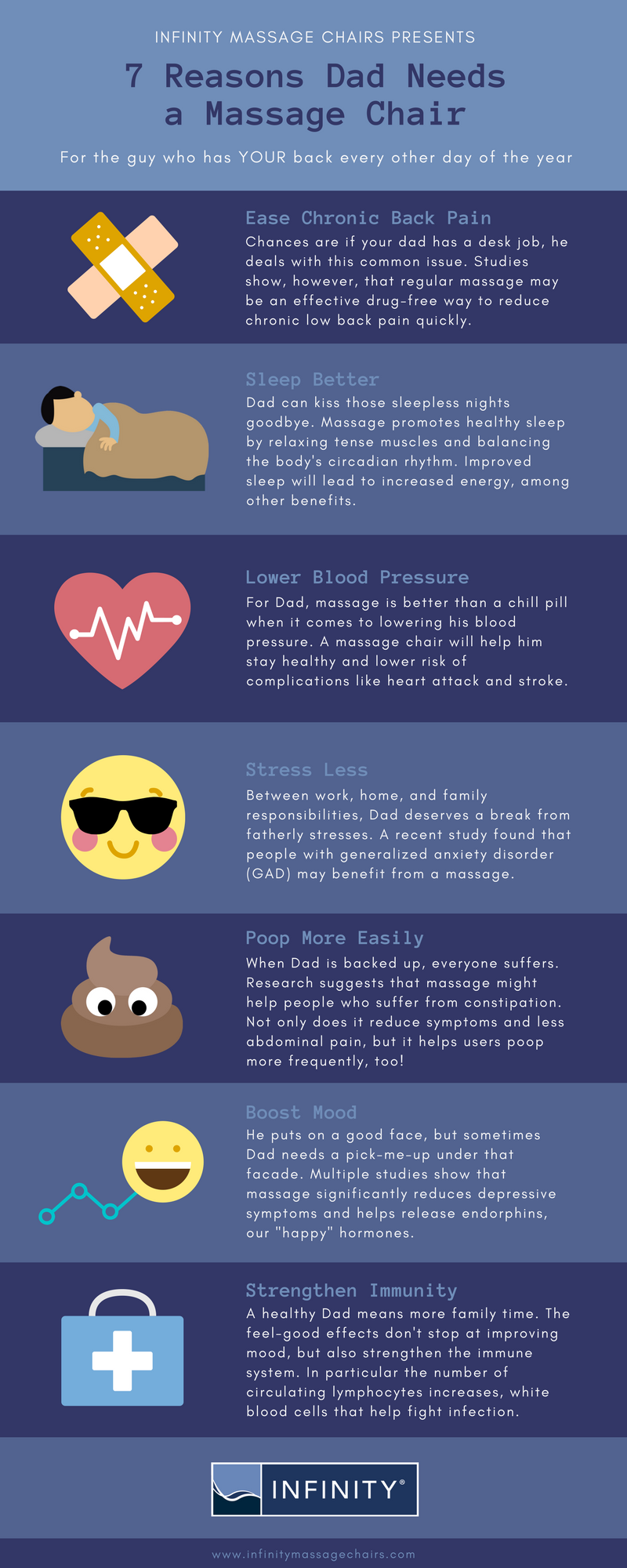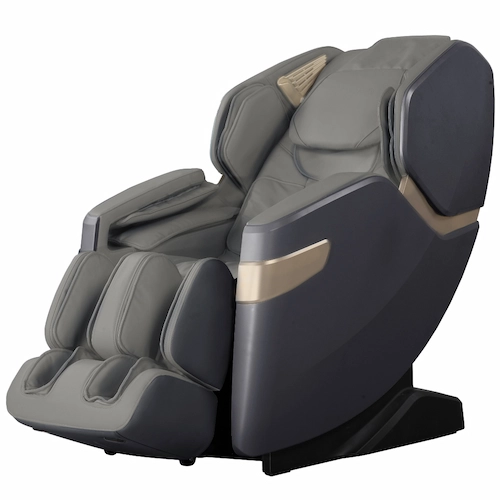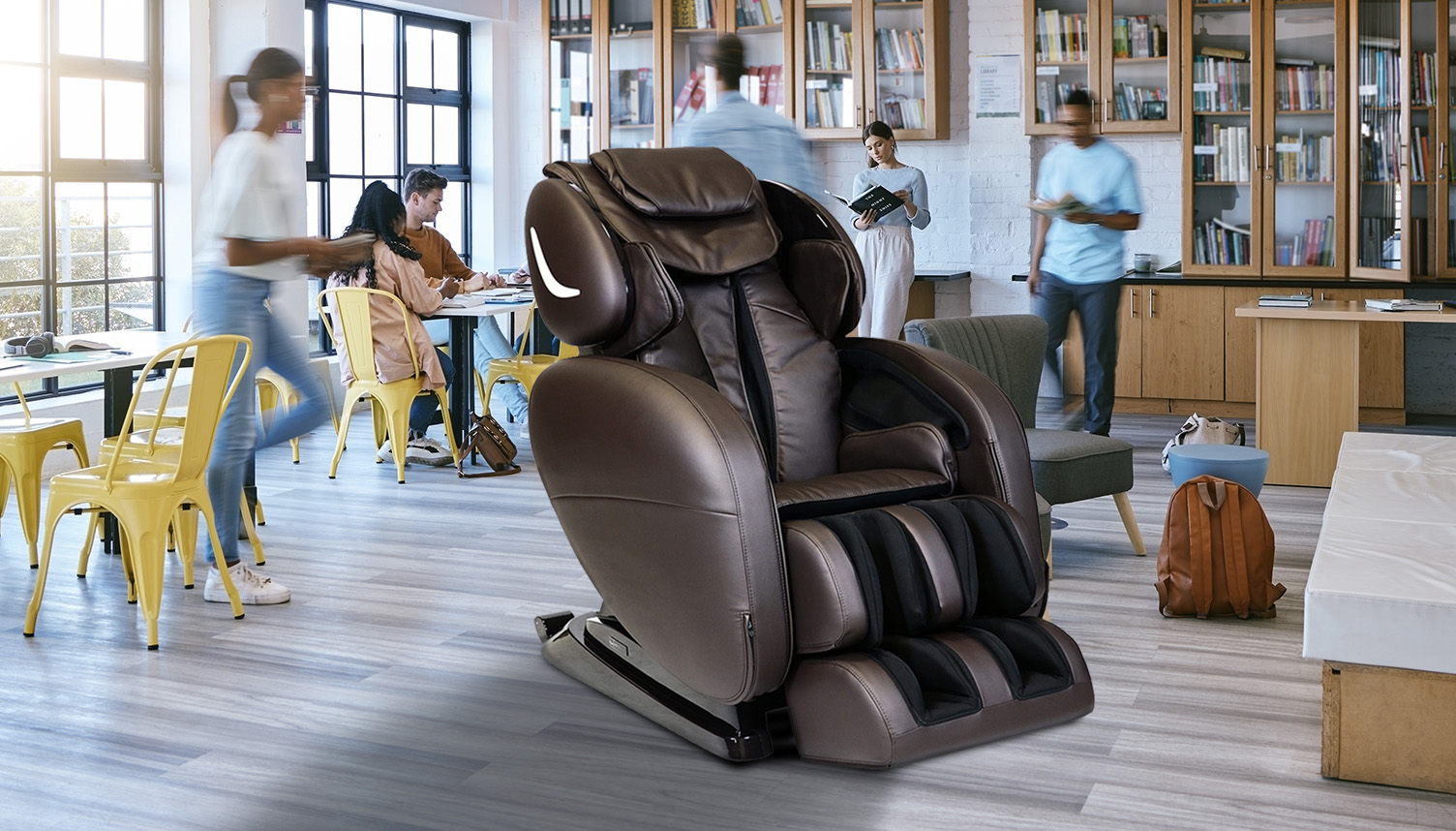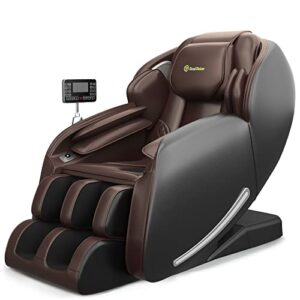Massage chairs can potentially hurt your back if used improperly or excessively. Overuse can lead to muscle strains or misalignment issues.
Massage chairs are designed to provide relief and comfort for tired and sore muscles, emulating the hands and techniques of a professional masseuse. They can be an excellent way to unwind after a long day or to help alleviate chronic pain.
The gentle kneading and rolling functions aim to boost circulation and promote relaxation. However, it’s essential to select a massage chair that suits your body’s needs and to use it correctly to avoid any potential harm. Proper posture, adjustable settings, and moderation are key factors in ensuring a safe and beneficial experience. With these considerations, a massage chair can be a valuable tool for maintaining back health and overall wellbeing. Remember to consult with a healthcare provider if you have underlying health issues before using a massage chair.

Credit: infinitymassagechairs.com
The Lure Of Massage Chairs
The Lure of Massage Chairs continues to grow as we embrace the quest for the ultimate at-home relaxation. These innovative thrones promise to replicate the skilled touch of a masseur. Many turn to them for relief from daily stress and back pain. Yet the question arises: Can these popular devices lead to discomfort or even injury?
Modern Comforts And Wellness Trends
As technology advances, so does our access to home wellness products. Massage chairs represent a fusion of modern luxury and health trends.
- Customizable settings: From intensity to heat, users can tailor their experience.
- Diverse techniques: Chairs now offer shiatsu, rolling, and even zero gravity modes.
- Smart integration: Sync with devices for a seamless relaxation routine.
These chairs have become integral to many wellness routines, but it’s essential to use them properly to avoid potential harm to your back.
Massage Chairs In The Relaxation Landscape
Melding effortlessly into the relaxation ecosystem, massage chairs are a central feature in many homes. They showcase not only comfort but a dedication to personal health.
| Benefit | Description |
|---|---|
| Convenience | Unwind anytime without appointments. |
| Stress Relief | Target stress points to release tension. |
| Muscle Recovery | Support healing with gentle massage after workouts. |
| Versatility | Adaptable to various body types and preferences. |
While the draw of these chairs is undeniable, an awareness of the correct usage is vital. Overuse or incorrect settings can counteract benefits, leading to soreness or back issues.
Users should balance sessions with physical activity and heed their body’s signals. Not all pain may be alleviated by a massage chair; some conditions require professional medical advice.
Beneath The Surface: How Massage Chairs Work
Imagine your back has its own personal therapist. That’s what massage chairs aim to be. These clever devices use various techniques to replicate a real massage. They might look like regular chairs, but beneath their exterior, an intricate play of mechanical motions and pressure works to soothe your body. Let’s dive beneath the surface and see how they do this.
Mechanisms Of Action
A massage chair’s heart beats with mechanics and electronics. These innovative creations are designed with rollers, airbags, heating pads, and sometimes even vibrating elements that work together to target muscle tension.
- Rollers glide along your back, pressing and kneading like a masseuse’s hands.
- Airbags inflate and deflate to mimic compression massage techniques.
- Heating pads warm up muscles, making them more pliable for better relief.
- Vibration adds another layer of comfort, stimulating your muscle fibers.
Different Types Of Massage Techniques
Massage chairs are versatile. They offer a variety of massage experiences that cater to different needs.
- Shiatsu: Focuses on pressure points for deep muscle relief.
- Swedish: Uses long strokes to aid relaxation and increase blood flow.
- Percussion: Helps energize and loosen tight muscles with a tapping motion.
- Kneading: Targets muscle knots to reduce stiffness.
Each type has a purpose, whether it’s to relax, rejuvenate, or recover. Knowing your needs will help you find the right fit when choosing a massage chair.
Potential Back Hazards Of Massage Chairs
Many embrace massage chairs for their muscle soothing abilities. Still, there’s a flip side. Without proper use, these machines can pose risks to your back. Let’s explore some pitfalls to keep your back safe and sound.
Excessive Pressure And Strain
Massage chairs are meant to relieve tension, but they can sometimes do the opposite. If the intensity is too high, the pressure can cause discomfort or even harm to your back. It’s important to adjust the settings to match your comfort level.
- Intense settings can lead to muscle damage
- Incorrect use could strain your back further
- Always start on a lower setting and gradually increase intensity
Aggravation Of Pre-existing Conditions
For those with existing back issues, a massage chair may seem like a good idea. However, it can worsen conditions such as herniated discs or spinal fractures. Before using a massage chair, it’s crucial to consult with a healthcare professional.
| Condition | Consideration Before Use |
|---|---|
| Herniated discs | Ensure no motions will increase the herniation |
| Spinal fractures | Verify the chair’s motions are safe for your condition |
| Osteoporosis | Get clearance to avoid fractures |

Credit: corechair.com
Personal Tales: When Relief Turns To Pain
Imagine settling into a massage chair with hopes of easing your sore back. You expect relaxation. You anticipate relief. Sometimes, though, the outcome is less soothing than imagined. These personal tales uncover a side of massage chairs not often spoken about. They reveal the moments when a quest for comfort can lead to unexpected discomfort or even pain.
Case Studies And User Experiences
Exploring the narratives of those who have felt the flip side of massage therapy chairs is critical. Here are some real-world stories.
- Sarah, age 29: After using her new chair, she felt sharp pain. The chair’s vigorous rollers, intended for deep tissue massage, were too intense for her mild strain.
- David, age 42: He loved his weekly chair sessions until one left him with numbness in his legs. An investigation pointed towards the chair compressing certain nerves excessively.
- Emma, age 35: Sought relief for her chronic tension but found the stiffened nodes of the chair aggravated her condition.
These experiences serve as reminders that what works for one may not suit another. Understanding the variety of responses to massage chairs is crucial for making informed decisions.
Learning From Misadventures
Reflecting on these stories teaches us about the unpredictable nature of back health. Proper use is key to a positive experience. It means considering one’s own physical condition before seeking the mechanical touch of a massage chair.
Consider the following takeaways:
- Start slow and with less intensity to gauge your body’s reaction.
- Be mindful of any pre-existing conditions that could be exacerbated.
- Adjust settings to personal comfort levels, avoiding a one-size-fits-all approach.
Knowledge is powerful, especially when it comes from those who have navigated the fine line between relief and pain. By tuning into our bodies and learning from others, we can better harness the potential benefits of massage chairs.
Navigating The Risks: Safe Massage Chair Use
Welcome to the world of relaxation and rejuvenation — massage chairs. But without proper precautions, these chairs could lead to discomfort. Let’s ensure you make the most of your massage chair without any back pain.
Selecting The Right Chair
It’s crucial to find a massage chair that matches your body size and shape. Look for chairs with adjustable settings. This ensures the rollers or airbags don’t press too hard against your spine. Here’s a quick guide:
- Check the chair’s weight and height capacity. Ensure it fits your profile.
- Opt for a chair with various intensity settings. Start with the lowest.
- Look for chairs with 3D or 4D massage capabilities. They mimic human touch more accurately.
Setting Appropriate Durations And Intensity
Balancing massage duration and intensity safeguards against potential back pain. For beginners, shorter sessions help acclimate your body. Here’s how to manage your massage routine:
| Duration | Intensity |
|---|---|
| Start with 10-15 minutes | Low to medium |
| Increase gradually | Adjust as comfortable |
Listen to your body’s response post-massage. Slight discomfort may be normal, but pain is not. If you feel any pain, lessen the duration and intensity immediately. Remember, regular breaks are essential for your back’s health.
Expert Opinions: What Professionals Say
Many people wonder about massage chairs and back health. How can these modern marvels impact your spine? Let’s delve into what the experts have to say.
Chiropractic Insights
Chiropractors focus on the spine. They share insights on massage chairs. Here are key points they emphasize:
- Proper Use: Ensure the chair fits your body type.
- Customization: Use chairs with adjustable settings. This can prevent discomfort.
- Limit Sessions: Keep massage times short. Long sessions might stress the back.
They also caution against overreliance. Massage chairs should complement other back care practices.
Physical Therapy Perspectives
Physical therapists understand muscle recovery. They offer unique views on massage chairs:
- Targeted Relief: Use chairs that target sore areas effectively.
- Recovery Aid: They can aid in post-workout recovery.
- Consult First: Seek advice if you have severe back issues.
Therapists stress the role of massage chairs in holistic therapy. They are one tool in a larger toolkit for back health.
Beyond The Chair: Alternative Back Pain Solutions
Exploring alternatives to massage chairs offers a gateway to diverse healing avenues
Holistic Approaches
Holistic methods consider the
Yoga and Pilates: Strengthen core muscles,enhance flexibility , andpromote spinal health. Acupuncture: Stimulates specific body pointsto encourage natural healing and pain relief.Herbal remedies: Utilize natural herbs toreduce inflammation and ease discomfort. Mindfulness and Meditation: Aimed at stress reduction,helping to alleviate the tension contributing to back pain.
Involving Practitioners In Your Journey
Seeking professional guidance can
| Practitioner Type | Role | Benefits |
|---|---|---|
| Aligns spine | Improves posture, reduces pain | |
| Rehabilitates | Restores function, educates on exercises | |
| Offers manual therapy | Enhances joint mobility, relieves muscle tension | |
| Provides targeted massage | Facilitates relaxation, promotes circulation |

Credit: www.komoder.es
Frequently Asked Questions Of Can Massage Chairs Hurt Your Back
Can Massage Chair Cause Damage?
Yes, massage chairs can cause damage if used improperly or excessively, leading to muscle strains or injuries. Always follow manufacturer guidelines for safe use.
Why Does My Body Hurt After Sitting In Massage Chair?
Your body may hurt after using a massage chair due to muscle sensitivity, the release of lactic acid, or the body adjusting to proper alignment after the massage. It’s similar to post-workout soreness.
What Are The Disadvantages Of A Massage Chair?
Massage chairs can be costly and may require significant space. They’re not portable and can’t fully mimic a professional masseuse’s techniques. Maintenance and repairs add to the long-term expense. Lastly, they might not suit individuals with specific health conditions.
Is It Bad To Sit In A Massage Chair All Day?
Sitting in a massage chair all day is not recommended. Prolonged use can lead to muscle soreness and reduced circulation. It’s best to limit sessions and take breaks.
Conclusion
Understanding your needs is crucial when considering the use of massage chairs. While they offer relaxation and relief, it’s essential to select one that aligns with your body’s requirements. Proper usage and moderation can ensure the wellness benefits of massage chairs, minimizing the risk of back discomfort.
Ensure to consult with a healthcare professional if you experience persistent pain. Embrace the comfort of massage chairs responsibly for optimal back health.



